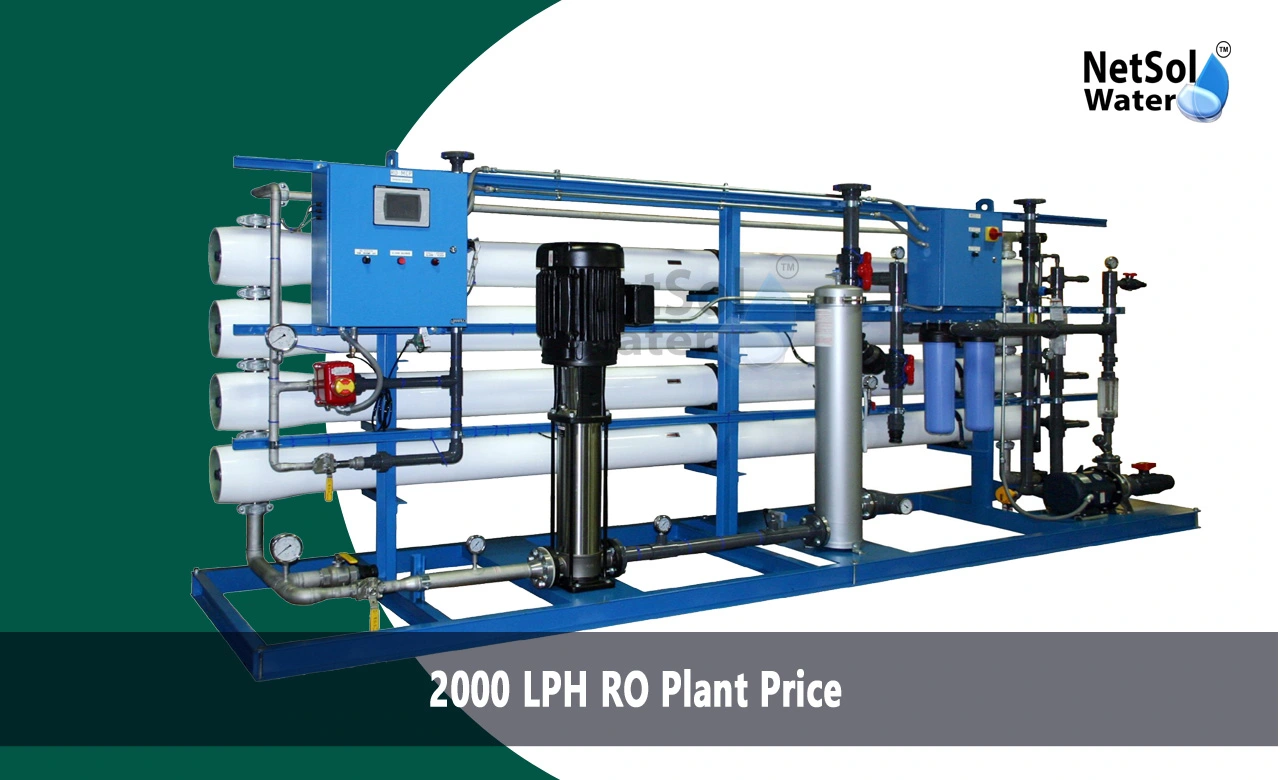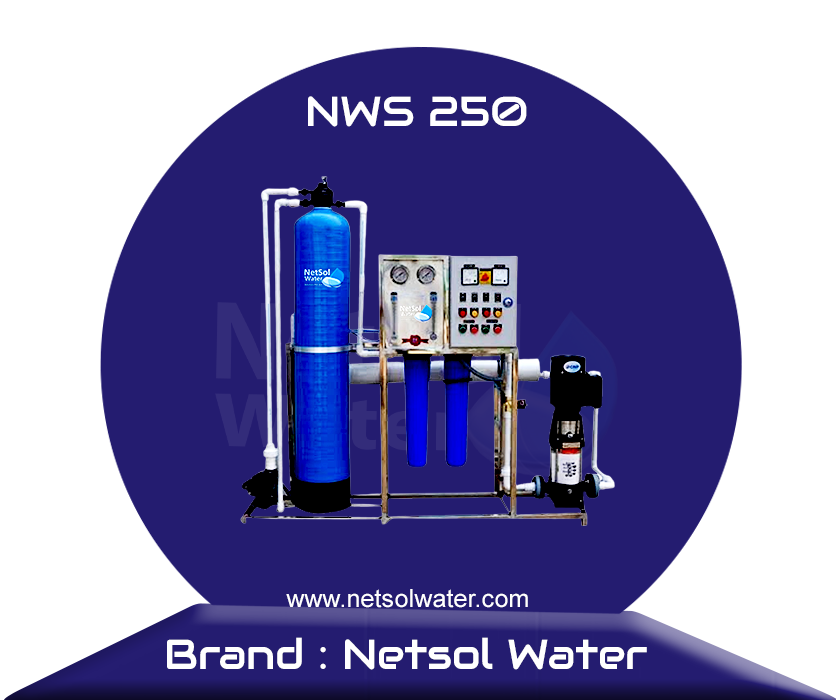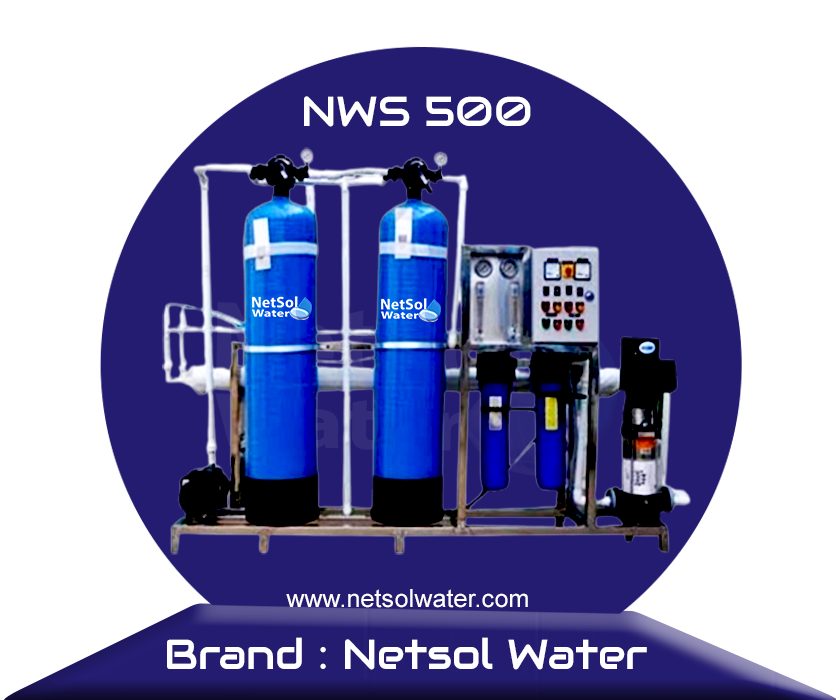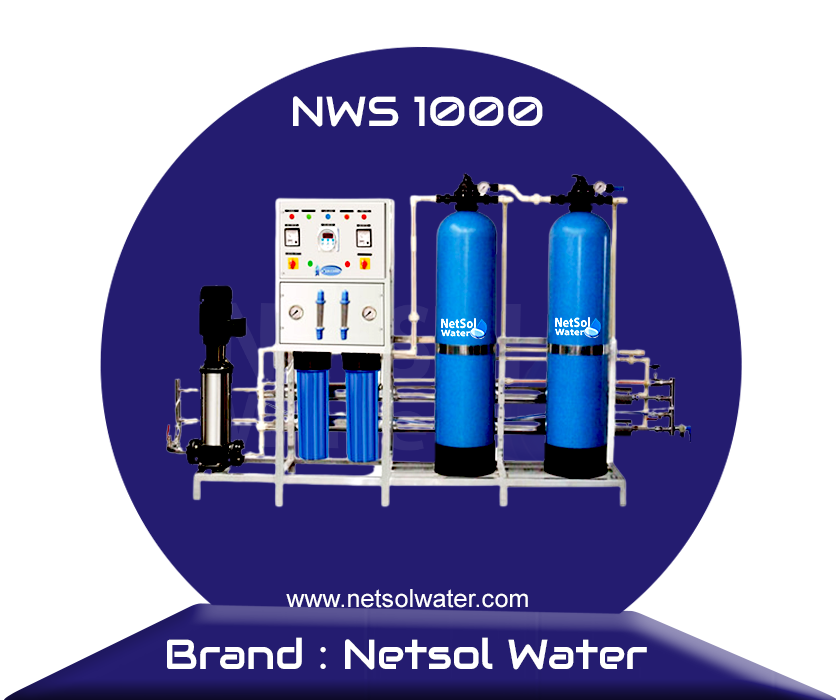Price of 2000 LPH RO Plant
Netsol Water leads as a top-notch manufacturer of 2000 LPH RO plants. We'll break down the pricing aspects, features, and benefits to help you make a sensible choice for your water purification needs.
What Drives 2000 LPH RO Plant Price?
Several significant elements influence the cost of a 2000 LPH RO plant:
1. System Capacity: Even modest modifications in the 2000 LPH capacity can affect cost.
2. Component Quality: Higher-grade membranes, pumps and filtration media maximize performance and lifetime but raise prices.
3. Brand Reputation: Established producers like Netsol Water command greater pricing for their competence and reliability.
4. Extra Features: Automation, monitoring systems, and complex controls add to the base price.
5. Installation Needs: Complex setups or remote sites could incur extra expenditures.
6. After-Sales Support: Comprehensive warranties and service packages determine the entire investment.
Typical Price Range
Expect to pay between INR 250,000 to INR 400,000 including taxes for a 2000 LPH RO plant. Keep in mind, the cheapest solution doesn't necessarily offer the best long-term value.
Key Features of 2000 LPH RO Plants
1. High-Capacity Purification
These systems give 2000 liters of cleaned water per hour, excellent for commercial and industrial applications.
2. Advanced Filtration Stages
Multi-stage filtering eliminates pollutants, dissolved solids, and tiny impurities.
3. Energy-Efficient Design
Modern 2000 LPH RO plants minimize power usage without losing performance.
4. Automatic Operation
Smart controls manage most functions, decreasing the need for ongoing manual supervision.
5. Compact Footprint
Despite their great capacity, these systems fit snugly in relatively compact places.
6. Customization Options
Reputable manufacturers create solutions to address unique water quality concerns and output needs.
7. Durability
Industrial-grade components ensure long-term durability even under intensive use.
Benefits of Investing in a 2000 LPH RO Plant
1. Consistent Water Quality
Enjoy a consistent supply of purified water that passes high-quality standards.
2. Cost Savings
Producing your own filtered water often costs less than relying on packaged supplies long-term.
3. Environmentally Friendly
Cut down on plastic waste by creating filtered water on-site.
4. Versatile Applications
These systems fit different industries, including food and beverage, medicines, and hotels.
5. Scalability
Many 2000 LPH systems expand or integrate into larger water treatment setups as your demands develop.
6. Improved Product Quality
Businesses relying on filtered water in their processes can boost end-product quality.
7. Regulatory Compliance
Meet or exceed water quality criteria in your industry with a properly maintained RO system.
Choosing the Right 2000 LPH RO Plant
Consider these variables while picking a system:
1. Water Analysis
Test your source water to establish the specific contaminants that need treatment.
2. Space Constraints
Measure your available installation area and choose a system with an adequate footprint.
3. Future Needs
Consider prospective increases in water demand and choose for a system that upgrades simply.
4. Maintenance Requirements
Factor in continuing maintenance costs and the availability of local support.
5. Energy Efficiency
Look for systems with energy recovery devices to minimize operational costs.
6. Manufacturer Reputation
Choose a trusted brand like Netsol Water with an established track record in water treatment solutions.
Installation and Maintenance
Proper installation provides optimal performance. Many manufacturers offer professional installation services, which frequently justify the higher expense. Regular maintenance keeps your 2000 LPH RO plant functioning efficiently:
· Replace filters and membranes as recommended
· Monitor water quality and system performance regularly
· Clean and sanitize components according to the manufacturer's schedule
· Address issues promptly to prevent system damage or downtime
Return on Investment
While the upfront cost of a 2000 LPH RO plant may seem large, consider the long-term benefits:
· Reduced reliance on external water sources
· Lower operational costs compared to purchasing filtered water
· Improved product quality and consistency
· Potential increase in customer satisfaction and confidence
Industry Applications
2000 LPH RO plants serve several sectors:
1. Food and Beverage Production
2. Pharmaceutical Manufacturing
3. Hotels and Restaurants
4. Hospitals and Healthcare Facilities
5. Electronics Manufacturing
6. Chemical Processing
7. Agricultural Operations
Comparing 2000 LPH RO Plant Options
Financing Options
Many manufacturers and distributors provide financing solutions for firms concerned about the initial investment:
· Leasing arrangements
· Installment payment schemes
· Performance-based contracts
These solutions can make owning a 2000 LPH RO plant more feasible for your budget.
Technical Specifications of a Typical 2000 LPH RO Plant
Here's what you might expect with a normal 2000 LPH RO plant:
|
Component |
Specification |
|
Feed Water Flow Rate |
2800-3000 LPH |
|
Permeate Flow Rate |
2000 LPH |
|
Recovery Rate |
65-75% |
|
Operating Pressure |
10-14 bar |
|
Membrane Type |
TFC Polyamide |
|
Number of Membranes |
3-4 (8" x 40") |
|
Pre-treatment |
Multimedia Filter, Activated Carbon Filter, Antiscalant Dosing |
|
Post-treatment |
UV Sterilizer, Ozonation (optional) |
|
Power Consumption |
7-9 kW |
|
Control System |
PLC-based with touchscreen HMI |
These characteristics may change depending on the manufacturer and specific model.
Water Quality Improvements
A 2000 LPH RO plant greatly boosts water quality. Expect:
· TDS Reduction: Up to 95-99%
· Bacteria Removal: >99.99%
· Virus Removal: >99.99%
· Hardness Reduction: >95%
· Chlorine Removal: >99%
These enhancements make the water appropriate for many industrial operations and commercial purposes.
Customization Options
Consider these modification options when purchasing a 2000 LPH RO plant:
1. Pre-treatment Systems: Add additional filtration processes dependent on your supply water quality.
2. Post-treatment Options: Incorporate UV sterilization, remineralization or ozonation for specific water quality requirements.
3. Remote Monitoring: IoT-enabled technologies allow you to monitor your plant's operation from anywhere.
4. Energy Recovery Devices: These can greatly cut operational expenses for high-pressure systems.
5. Material Upgrades: Opt for stainless steel components for specialized industries like pharmaceuticals or food processing.
Operational Considerations
Operate a 2000 LPH RO plant efficiently by paying attention to:
1. Feed Water Quality: Test routinely and adjust pre-treatment to guarantee optimal membrane performance.
2. Pressure Monitoring: Watch operational pressures to discover any concerns early.
3. Flux Rate: Maintain the optimum flux rate to balance productivity and membrane longevity.
4. Chemical Cleaning: Perform cleanings as indicated to prevent scaling and fouling.
5. Data Logging: Keep extensive records of performance indicators to discover trends and optimize operations.
Environmental Impact
Investing in a 2000 LPH RO plant can positively benefit the environment:
· Reduced Plastic Waste: On-site filtered water production cuts down on plastic bottle usage.
· Water Conservation: Many modern RO plants promise great recovery rates, decreasing wastewater.
· Energy Efficiency: New RO plants consume less energy than previous units, minimizing your carbon footprint.
Troubleshooting Common Issues
Even the greatest 2000 LPH RO plants might meet issues. Here are some frequent issues and easy fixes:
1. Low Permeate Flow:
· Check feed pressure
· Inspect for membrane fouling
· Verify pre-treatment system operation
2. High TDS in Permeate:
· Check for membrane damage
· Ensure adequate system flushing
· Verify brine seal placement
3. High Pressure Drop:
· Look for clogged pre-filters
· Check for scaling on membranes
· Inspect for pipe restrictions
4. Unusual Noise:
· Check pump operation
· Look for air in the system
· Inspect for loose fittings
Regular maintenance prevents many of these difficulties, saving you time and money in the long term.
Conclusion
Investing in a 2000 LPH RO Plant demands serious thought. Understanding pricing variables, significant featuresand long-term benefits will help you make a sensible purchase that meets your water purifying demands and budget.Balance initial costs with long-term return. A well-chosen 2000 LPH RO plant delivers years of reliable service, adding to your operation's success and sustainability.
To explore customised commercial RO plants, Industrial RO plants, ETP or STP solutions for your needs in your areas and nearby regions, contact Netsol Water at:
Phone: +91-965-060-8473, Email: enquiry@netsolwater.com






